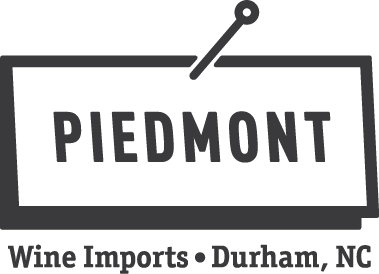
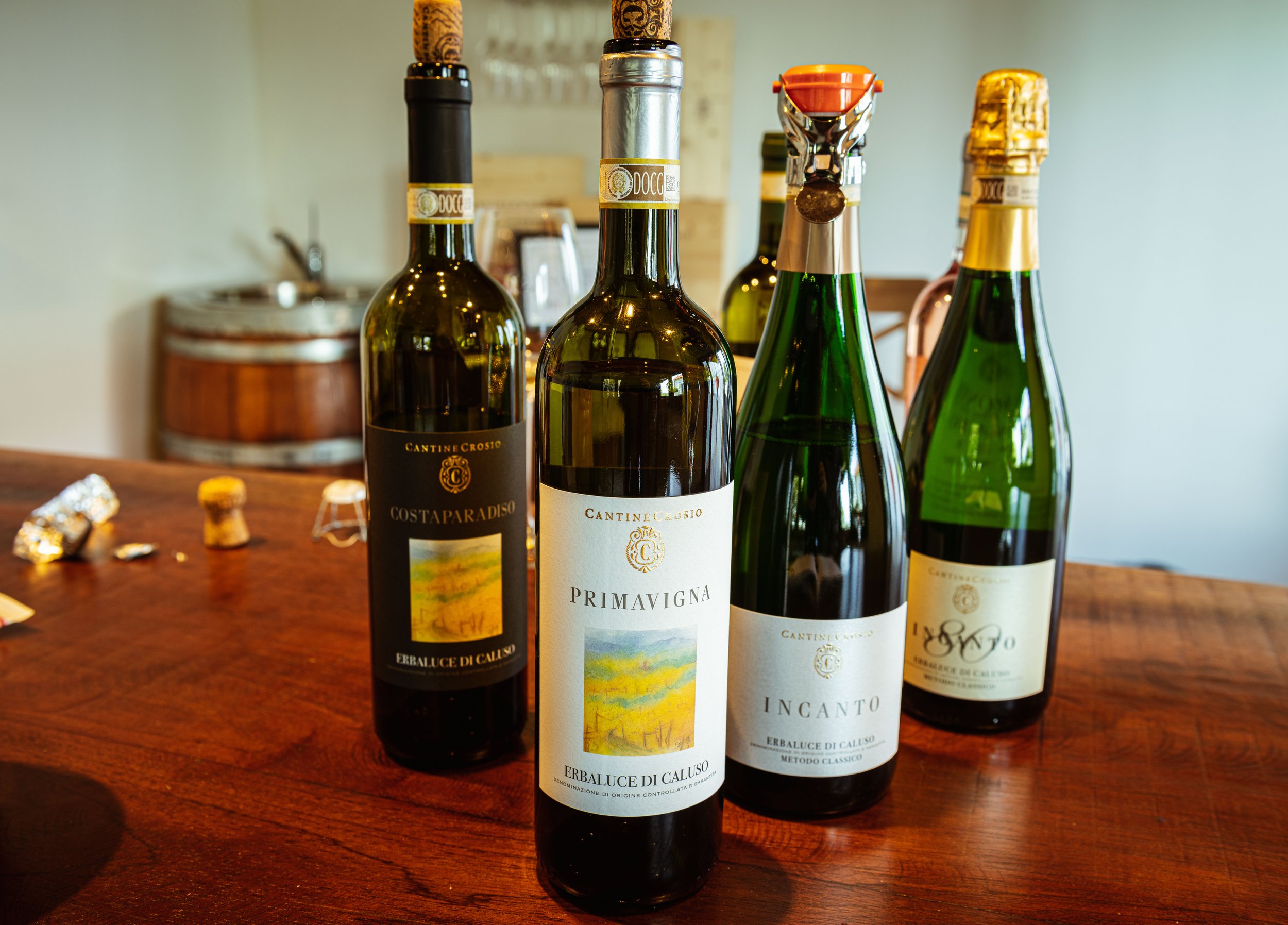





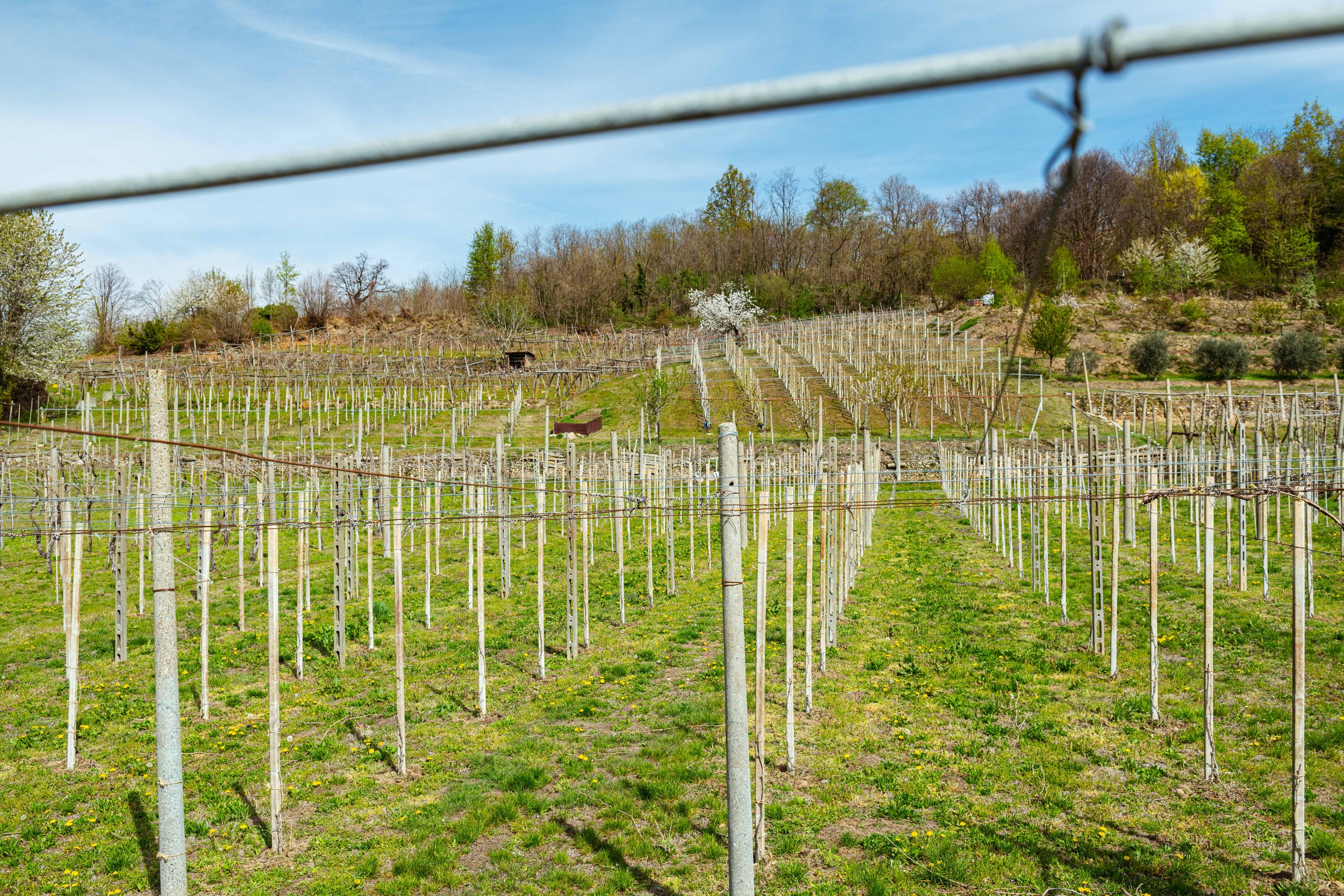
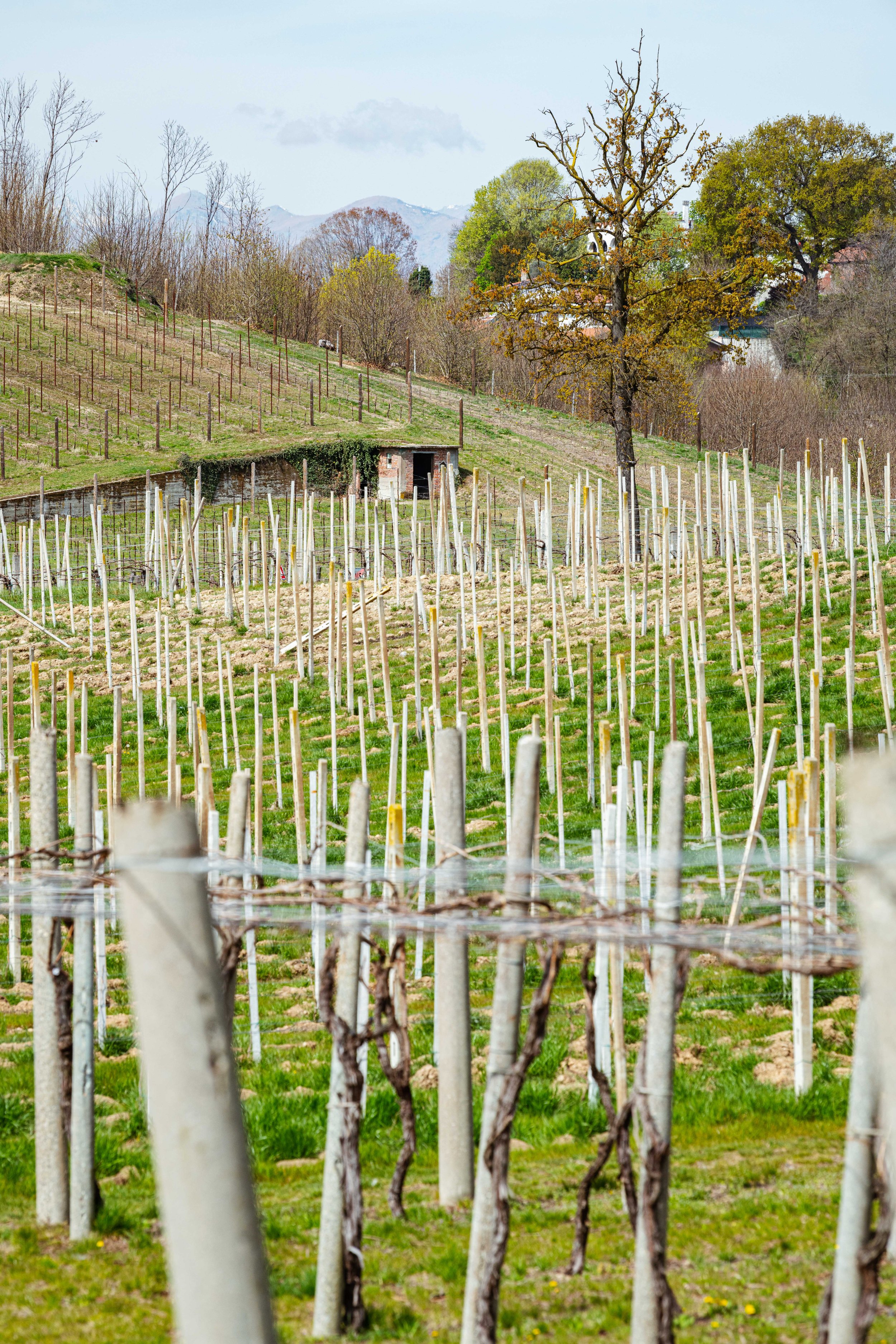

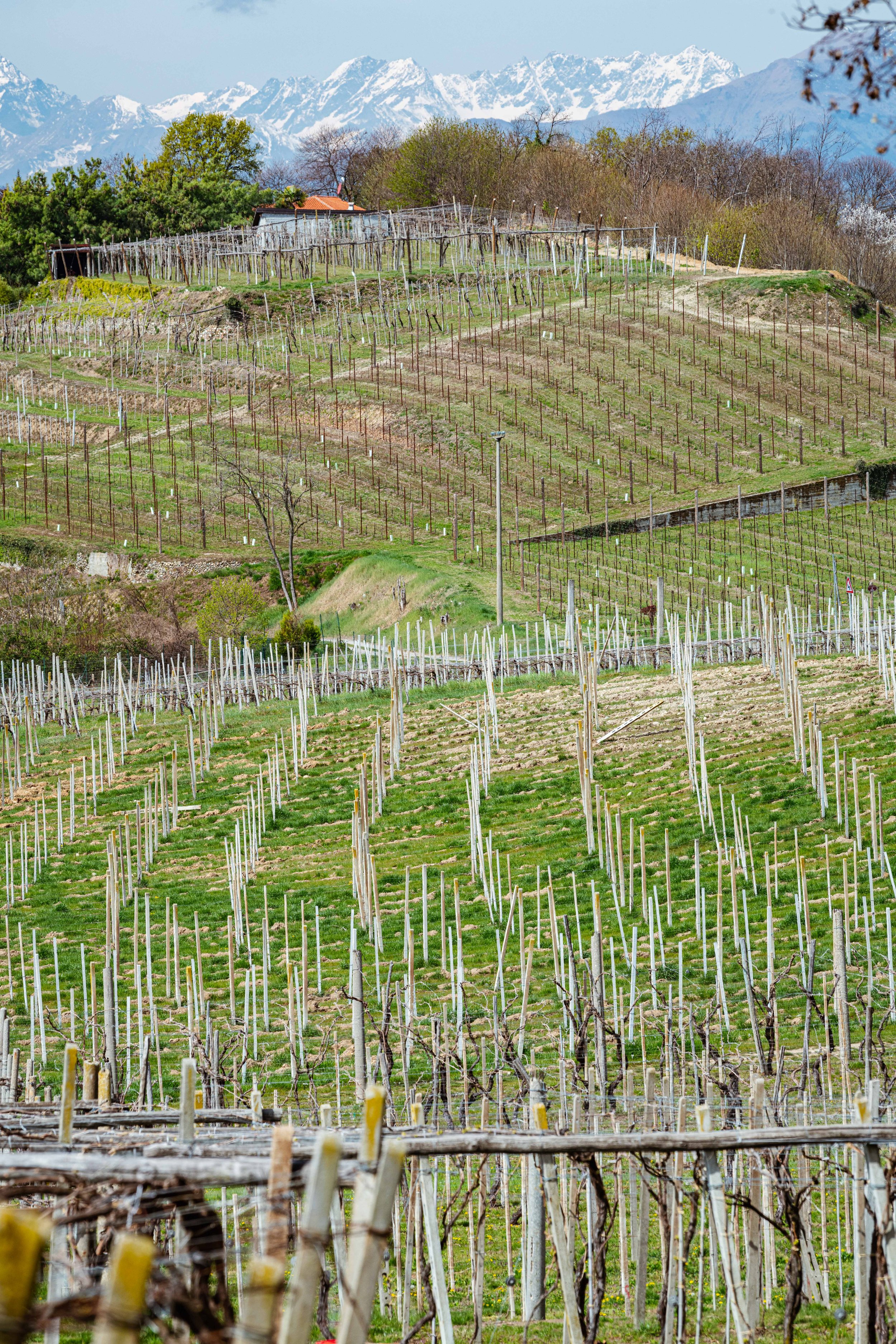






Cantine crosio
Who: Roberto Crosio
Where: Candiá Canavese (Piemonte, Italy)
What grapes: Erbaluce, Nebbiolo, Barbera, Merlot
Key facts: A terroir shaped by glacial debris, beautiful lakes, and dramatic Alpine backdrops, Roberto cares for his vines by hand, without the use of herbicides
Website: https://www.robertocrosio.it/en/
Instagram: @cantinecrosio
Cantine Crosio “Erbalus” Erbaluce DOCG
Viticulture: organic
Soil type: Glacial moraine with gravel and sand
Elevation: 350m
Grapes: Erbaluce
Method of fermentation: cryomaceration of bunches for about 3 days in special rooms at 0°C. Soft pressing of the grapes followed by decantation of the must. Fermentation with selected yeasts in stainless steel tanks at a controlled temperature of 15°C. Aging on its lees in stainless steel tanks for about 3 months. Bottling at the beginning of spring. Final aging in bottle for at least 2 months.
Cantine Crosio “Rosadeimonti” Rosato
Viticulture: organic
Soil type: Moraine with gravel debris and sand
Elevation: 320m
Grapes: 85% Nebbiolo and 15% Syrah
Method of fermentation: Cold macerated for three days. Left on the skins for 15 hours. Fermented with selected yeasts in stainless steel tanks. Bottled in the spring.
Like everything Crosio fashion, this wine has precision and focus. It’s a fun wine to drink, pale and dry, with very dialed-in floral aromas.
Cantine Crosio “Canavese” Rosso
Viticulture: organic
Soil type: Glacial moraine with gravel and sand
Elevation: 350m
Grapes: 75% Barbera, 25% Merlot
Method of fermentation: 7 days fermentation on grape skins with selected yeasts at a controlled temperature of 26-28°C. Soft pressing followed by aging in stainless steel tanks for 3-4 months. Bottling at the end of spring. Final aging in bottle for at least 2 months.
Cantine Crosio “Primavigna” Erbaluce di Caluso DOCG
Viticulture: organic
Soil type: Glacial moraine with gravel and sand
Elevation: 350m
Grapes: Erbaluce
Method of fermentation: cryomaceration of bunches for about 8 days in special rooms at 0°C. Soft pressing of the grapes followed by decantation of the must. Fermentation in stainless steel tanks at a controlled temperature of 15°C. Aging on its lees in stainless steel tanks for 5-6 months. Bottling at the end of spring. Final aging in bottle for at least 3 months.
Cantine Crosio “Incanto” Metodo Classico Erbaluce di Caluso DOCG
Viticulture: organic
Soil type: Glacial moraine with gravel and sand
Elevation: 350m
Grapes: Erbaluce
Method of fermentation: fermentation with selected yeasts in stainless steel tanks at a controlled temperature of 15°C. Aging on its lees in stainless steel tanks for 9 months with batonnage. Re-fermentation in bottle for the prise de mousse, followed by 36/40 months aging on lees. Degorgement and filling with the same wine when aging is complete.
Roberto Crosio started farming in his native Caluso at the turn of the millennium. His parents were successful restaurateurs in the area, dedicated to showcasing the precise local flavors of Caluso, but too busy to farm! In fact, his family’s nearby restaurant has earned a Michelin star. After graduation, Crosio’s parents gave him a small vineyard. It was enough for Roberto and his wife Monica to build into a modest-but-thriving commercial winery.
The Crosio family vineyard is at the base of the Aosta valley, a terroir shaped by glacial debris, beautiful lakes, and dramatic Alpine backdrops. Roberto cares for his 10 hectares of pergola-grown Erbaluce vines by hand, without the use of herbicides. Red grapes (mostly Nebbiolo and Barbera) are planted with the more commonplace Guyot vine training system.
I’ve wanted to import Erbaluce di Caluso for many years. In spite of being one of the oldest DOC’s in Piemonte (established 1967) There aren’t many suitable choices to add to the PWI universe. Candiá Canavese (Roberto’s hometown) has a landscape clearly suitable for the cultivation of vines. But less than 250 hectares of Erbaluce are grown within its boundaries.
In theory at least, the Canavese vine growing area begins not far from Turin. On a cold January morning we drove north from that grey metropolis, on a winding half-hour ascent to Cantine Crosio. Scouting had been done in advance. Jeff had made friends with the proprietors of detour-worthy La Rampolina restaurant on the banks of Lago Maggiore, and we’d met up there the previous weekend, to catch up, eat snacks, and survey the beautiful (if misty) terrain. La Rampolina’s cellar is an exhaustive inventory of the best bottles produced in the surrounding territory. We poked around, took photos, made notes. The owners were charming, affable, well-acquainted with Jeff from numerous meals, and eager at shift’s end to share a digestivo, and some encouraging words. I think I pulled some espresso shots.
Prior to this excursion I was far more familiar with the “real” Alto Piemonte to the east, an area only really separated from the place we were exploring by an administrative squabble over Caluso’s exclusive right to make wines labelled as Erbaluce di Caluso DOCG. There’s a similarity in the terrain and the tapestry of indigenous grapes cultivated in the Costa della Sesia and Canavese. Setting local beef aside, the land around Crosio’s small cellar resembled the colline Novaresi. It’s Alto Piemonte in my estimation, in all but name.
If there’s a profile we are looking for when searching for new partners for our wine importing activities, Roberto and Monica’s farm lands squarely in the middle of it. Family-owned, small scale but not a hobby, making tens of thousands of bottles, but not millions. Erbaluce is a peerless white wine grape. It can make wine with class and longevity. Its popularity is held back by the difficulty of making it in the right places, and the small number of bottles that travel beyond Turin. The couple have a tiny tasting room and shop. The winery is all business, quaint enough I suppose, but not a showpiece. Stacks of bottles and hoses, the reassuring look of a clean but compact cellar. At first meeting the couple seemed grounded, level-headed, tethered to the earth in the best possible way.
The wines over-delivered. I don’t think it takes talent or experience to find tasty expensive wine. In their Cantina, I felt like we stumbled onto wines that belonged in North Carolina. Roberto’s wines are articulate ambassadors for Erbaluce, honed to all the best facets of the grape. They aren’t showy, but they really deliver, and at glass-pour prices.
What we tasted:
2021 “Erbalus” Erbaluce di Caluso DOC - Younger vines planted at lower elevations on their farm. The wine is fresh and bright, with an appealing bitter almond note on the finish. Very pleasant sunny white wine.
2021 “Primavigna” Erbaluce di Caluso DOC - This was Roberto’s first vineyard. It was an 18th birthday present from his parents. He started making wine as soon as he finished school. The site is closer to Gran Paradiso, a mountain that looms above Caluso. Primavigna has a mellow palate-feel. Mineral/chalk texture. The vines are a 10 minute drive from Cantine Crosio’s cellar, and are planted in the traditional pergola high trellising system.
2018 “Incanto” Metodo Classico sparkling Erbaluce - The wine is clean and bright. It was disgorged in July of 2022. Incanto is brut nature/no dosage. Though it’s five years old at this stage, Incanto tastes remarkably young. I think this is extra brut bubbly with lots of life ahead of it.
2021 Canavese Rosso DOC - Roberto’s affordable red is 75% Barbera and 25% Merlot, grown in stony, sandy, glacial soils. Dark in color, but quite refreshing in the glass. Roberto picks his red grapes in mid September. They receive more rain in Caluso than is typical for Barbera/Nebbiolo farmers in the southern Piedmont. Elevation and precipitation shapes an affable, mid-weight wine for early-ish drinking.
